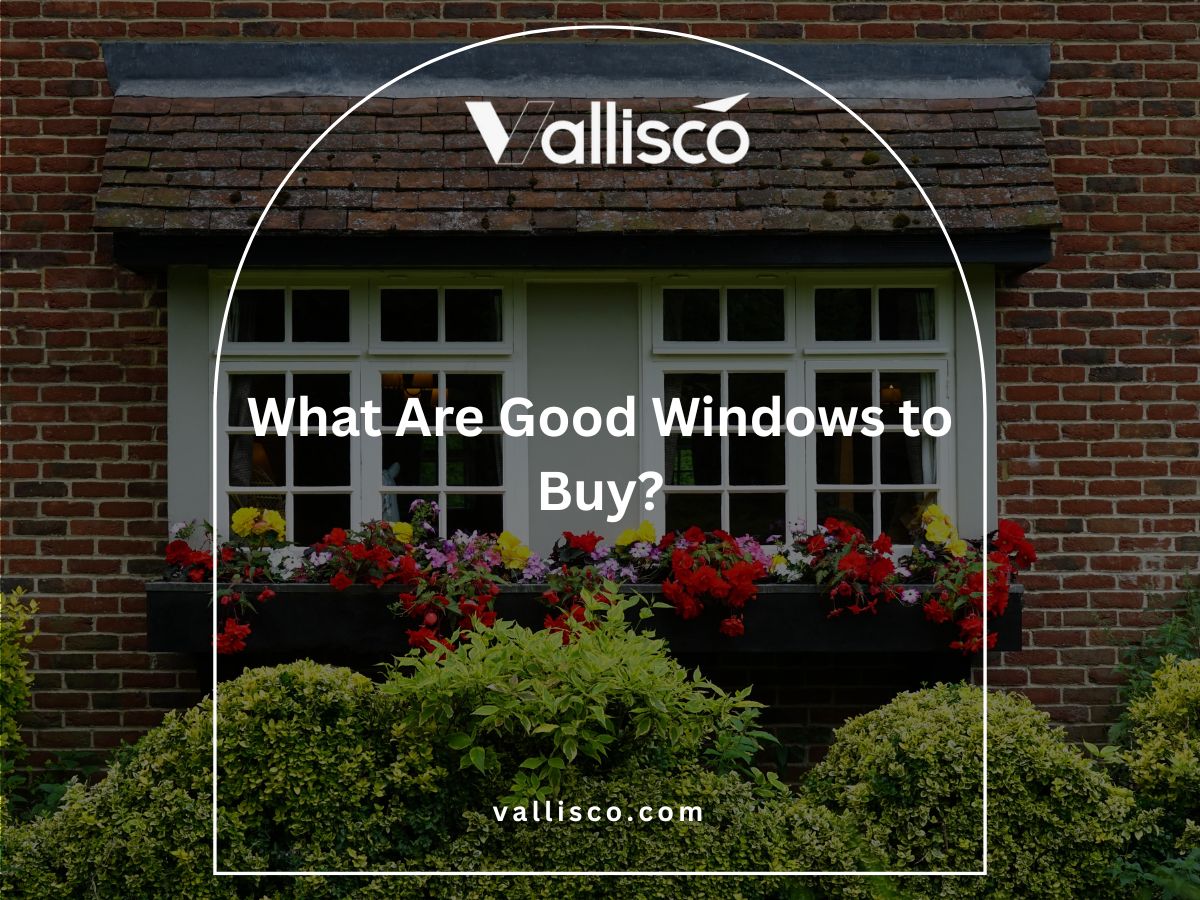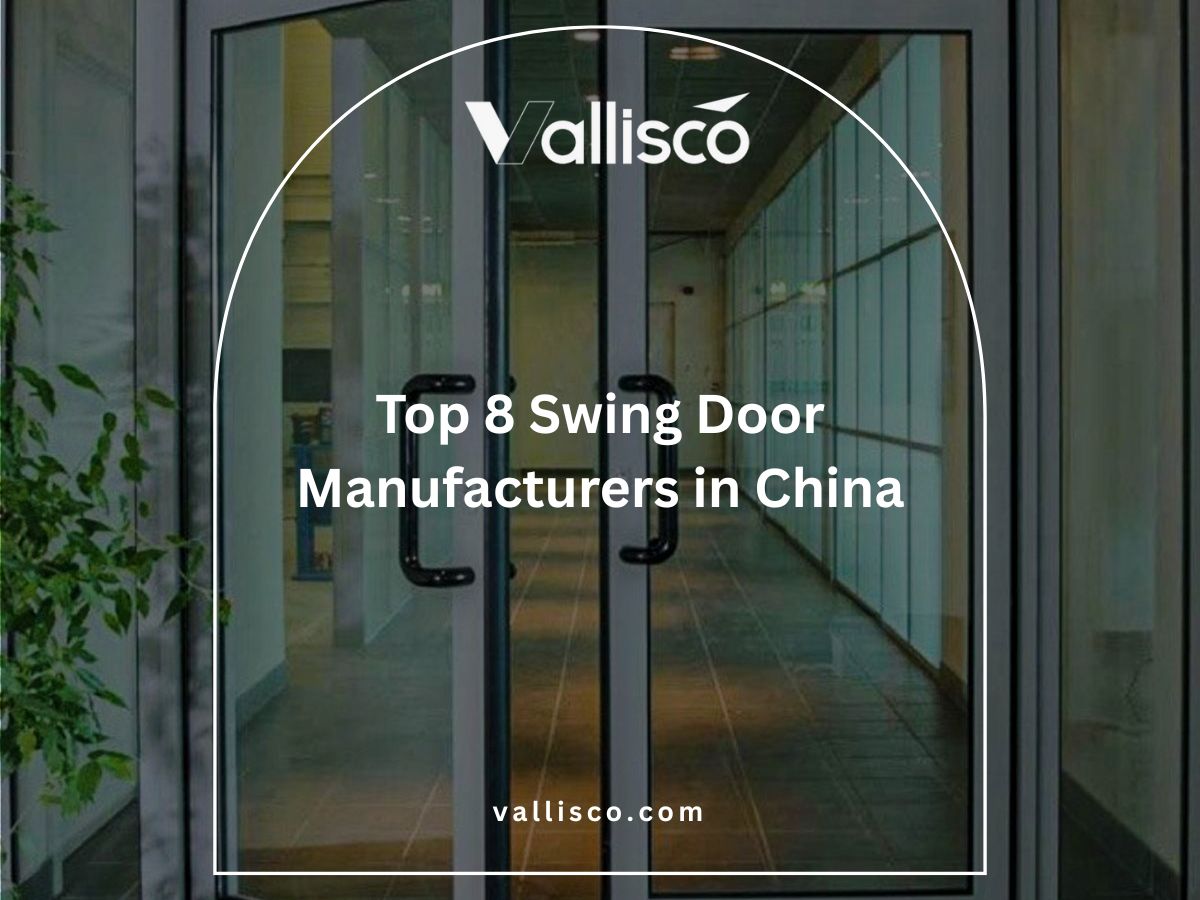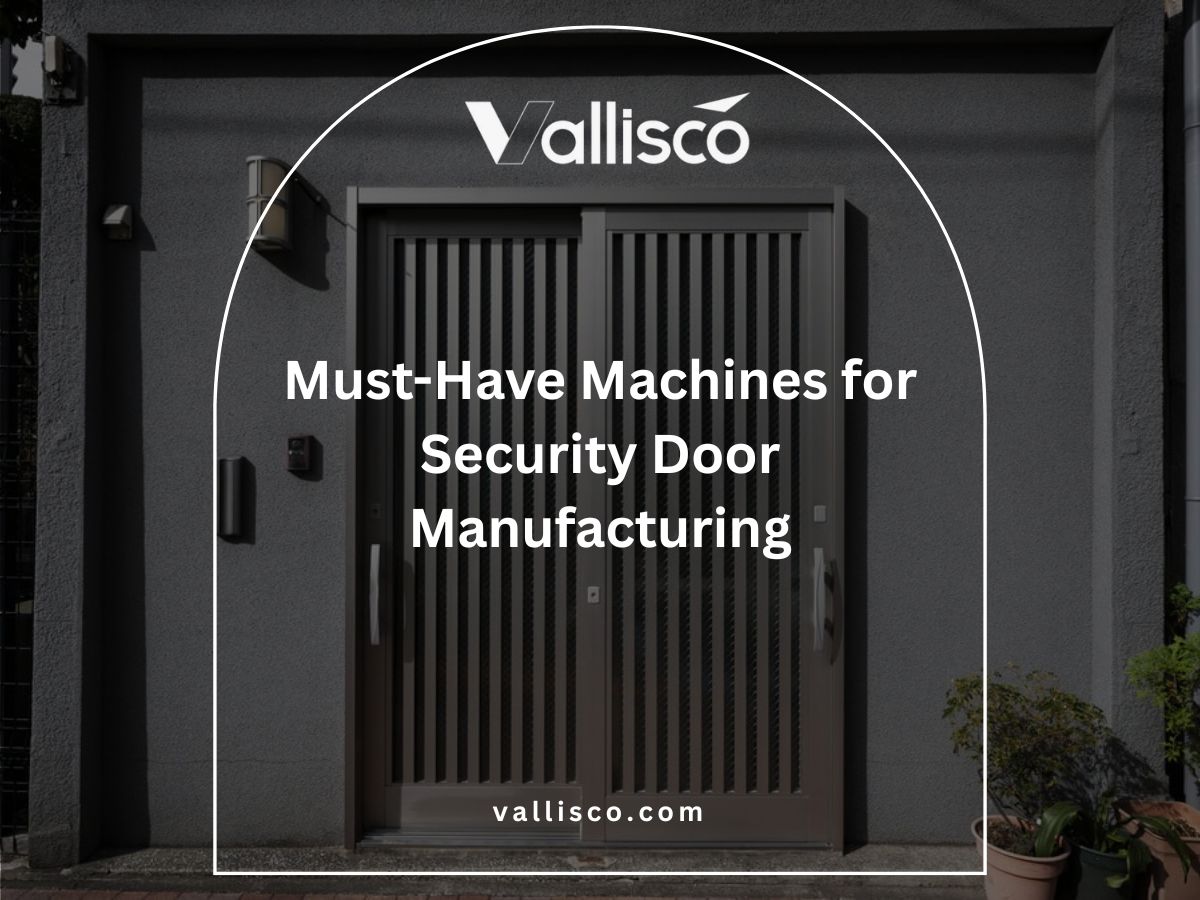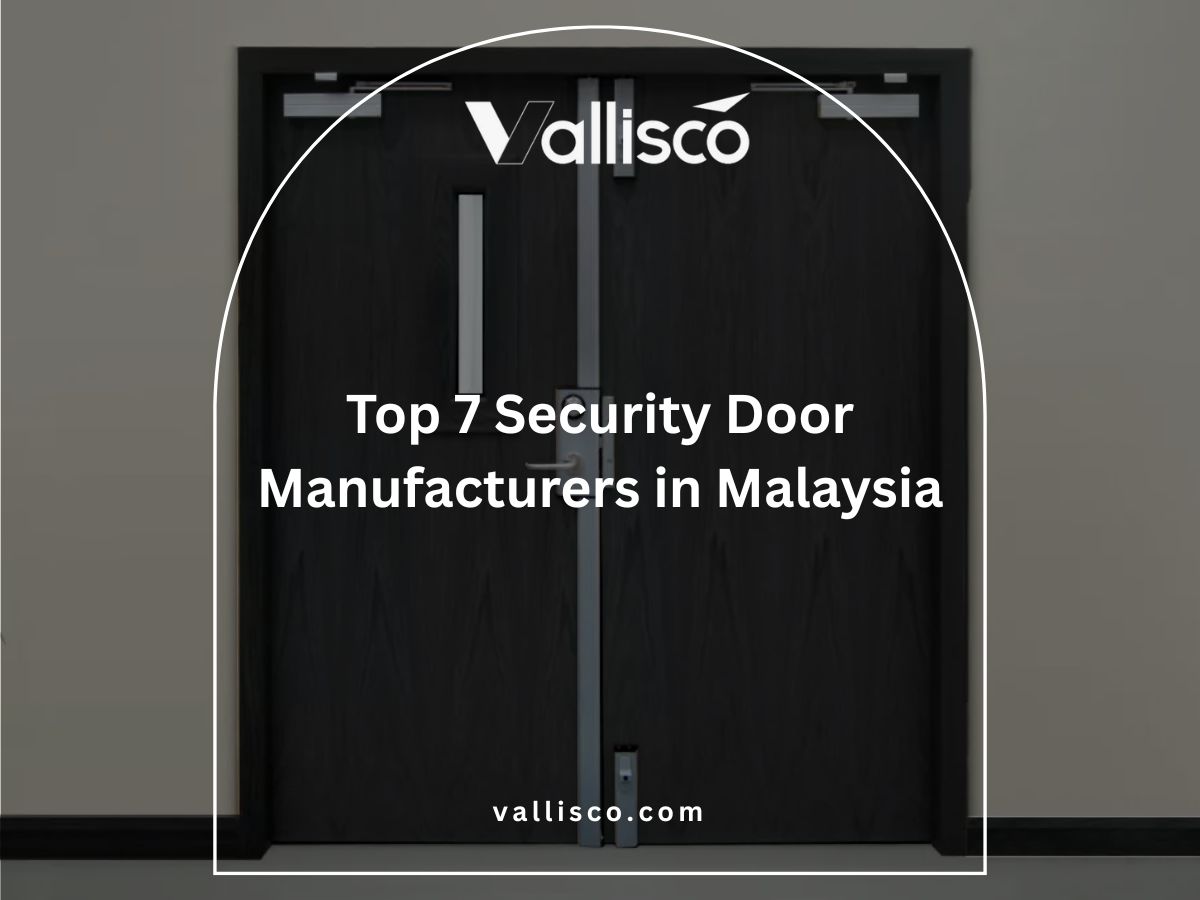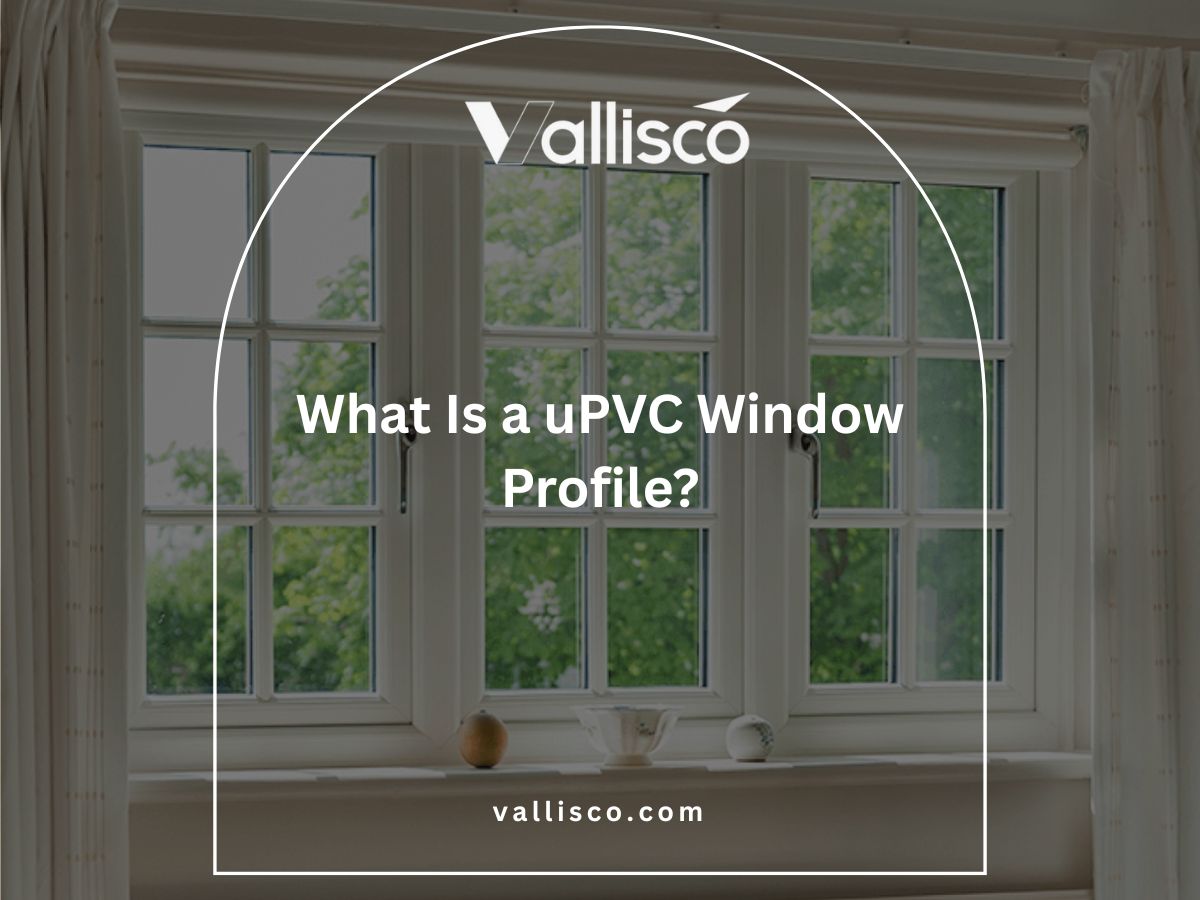I remember walking into a client’s apartment project where the old sliding doors were sticking and rattling. The property manager told me the tenants had been complaining for months.
That moment reminded me how much a simple detail like a balcony sliding door can affect both comfort and value.
Over the years, I’ve worked with hotels, villas, and apartment owners facing the same problem. They needed doors that last, look good, and work smoothly every day.
In this article, I’ll share 8 of the best apartment balcony sliding door options. You’ll see the strengths of each type, so you can make the right choice for your property.
Finding the right door doesn’t have to be complicated, you just need the right information.
Let’s take a closer look!
Quick Comparison Chart
Before we break things down one by one, here’s a quick look at how each door type compares. It’s a simple way to spot what might work for your project, before we dive deeper.
| Door Type | Panels | Frame Material | Sealing / Insulation | Optional Add-ons | Best For |
| 2-Panel Sliding Door | 2 (1 fixed) | Aluminum, uPVC | Basic weather strips | Screens, locks | Small balconies, B&Bs |
| 3-Panel Sliding Door | 3 (1–2 fixed) | Aluminum | Good sealing | Privacy glass, screens | Mid-size apartments, guest suites |
| 4-Panel Sliding Door | 4 (2 fixed) | Aluminum | Better wind control | Stacking option | Large balconies, villas |
| Lift and Slide Door | 2–3 panels | Aluminum, wood | High insulation | Thicker glass, lock options | High-rise, exposed balconies |
| Stacking Door | 3–6 panels | Aluminum | Medium to high | Screens, smart locks | Villas, corner apartments |
| Pocket Sliding Door | 1–2 panels | Aluminum, uPVC | Good | Minimalist handles | Custom builds, modern villas |
| Corner Sliding Door | 2 sets, 90° | Aluminum | Sealed corner joint | Screens, curtain tracks | Penthouses, high-end units |
| Aluminum Sliding Door | 2–4 panels | Aluminum only | Weather-resistant | Screens, coatings | Hotels, tropical zones |
| uPVC Sliding Door | 2–3 panels | uPVC | Good thermal control | Low-E glass, screens | Budget projects, cooler regions |
| Frameless Glass Door | 2–3 panels | Frameless glass | Minimal insulation | None or manual screens | Luxury apartments, indoor spaces |
Now that you’ve seen the overview, let’s explore each option in more detail. One of these just might be the right fit for your space.
1. Standard 2-Panel Sliding Door
A standard 2-panel sliding door is the kind of door I see most often in apartments and hotels. I remember that project I mentioned earlier with the rattling doors, the problem started because the owner had installed a basic 2-panel system that wasn’t built to last. For many of my clients, this style can work very well, but only if the right quality is chosen.
Key Features
- Sliding Panels: One panel stays fixed while the other slides open. It’s simple, practical, and familiar for residents and guests.
- Space Saving: Because the panels glide on tracks, you don’t lose any indoor or outdoor space. This is why many property managers prefer them for smaller balconies.
- Glass Design: Large clear panels let in natural light, making rooms brighter and more inviting. Guests or tenants notice this right away.
- Frame Options: Aluminum is often the go-to for my clients, as it’s strong and requires little upkeep. Other frame choices like uPVC or wood can also work, depending on style and budget.
Essential Components
- Tracks: A solid track makes the panels easy to open and close. Poor tracks are often the first part to fail.
- Rollers: Good rollers carry the weight of heavy glass without sticking. I’ve seen many complaints that trace back to cheap rollers wearing out too quickly.
- Locking System: A standard sliding door should come with a reliable multipoint or hook lock. This is something I always advise my clients to confirm.
- Seals and Gaskets: Quality sealing matters for comfort and energy savings, especially in hot or rainy climates. It also reduces complaints from tenants.
Things to Consider
Durability and maintenance often make or break the experience with these doors. I’ve met property owners who thought they were saving money by going for cheaper systems, only to end up with repair costs in just a few years. The project I shared earlier is a good example, poor-quality tracks and rollers led to rattling and constant issues.
Another point is customization and sizing. Standard doesn’t mean you have to accept a basic look. You can choose thicker glass for better insulation or pick a frame finish that matches the building design. Thinking about these choices upfront helps avoid regrets later.
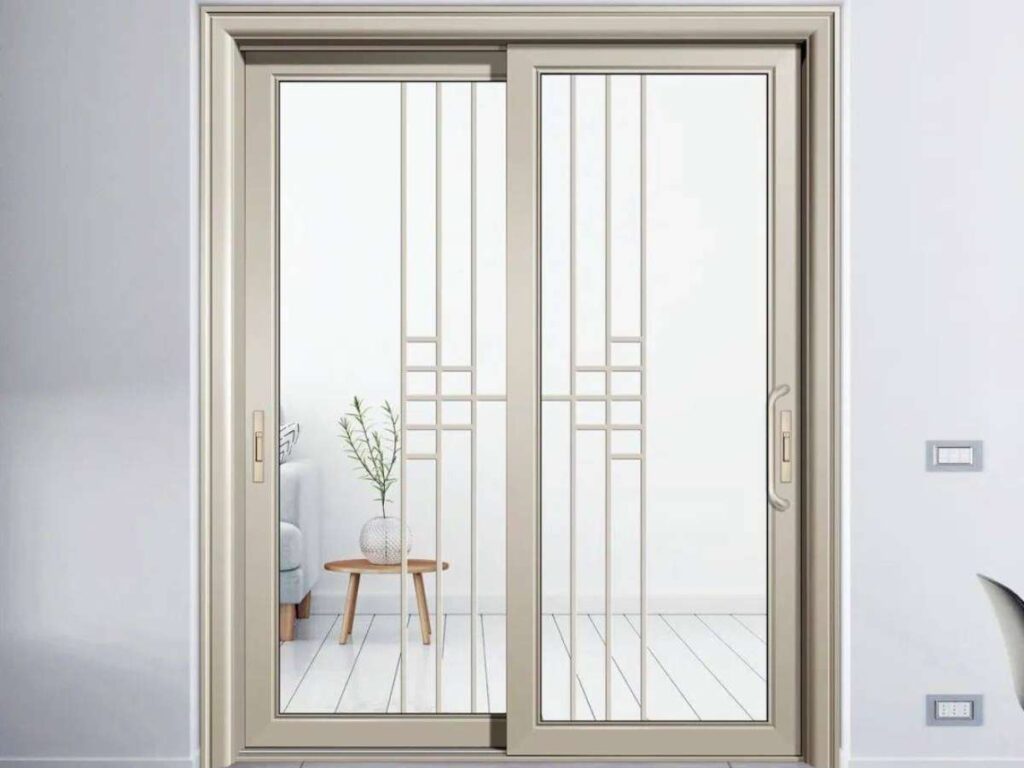
2. 3-Panel or 4-Panel Sliding Door
I often recommend 3-panel or 4-panel sliding doors for projects where clients want a wider opening to the balcony. I remember one villa project where the owner wanted guests to step out onto the terrace without feeling restricted. A larger sliding system made the space feel open and connected to the outdoors.
Key Features
- Flexible Opening: With three or four panels, you can slide multiple sections to create a wider entrance. This works especially well for hotels or apartments with larger balconies.
- Design Options: Panels can stack to one side or split in the middle. This allows property owners to choose how the space flows.
- Enhanced Light: More glass surface means more natural light coming in. It makes indoor areas brighter, which tenants and guests often value.
- Stronger Frames: Because of the size, these doors usually come with reinforced frames and heavier tracks to handle the weight.
Essential Components
- Heavy-Duty Tracks: Bigger panels require stronger tracks. I’ve seen projects fail because light tracks were used for heavy glass.
- Rollers for Large Panels: These rollers are built to handle extra weight. If they’re high quality, the doors glide smoothly even when the panels are tall and wide.
- Secure Locking: Larger openings need solid locks. Many systems include multi-point locks for added protection.
- Joinery and Seals: Proper joinery keeps the panels aligned, while good seals prevent air and water leaks despite the larger size.
Things to Consider
Maintenance can be more demanding with bigger systems. A 3- or 4-panel sliding door from Vallisco has more moving parts, so keeping the tracks clean and rollers in good condition is essential. I’ve had clients who neglected this, and the doors became difficult to operate much faster than they should have.
Cost and installation are other important points. These systems are more expensive than a standard 2-panel door, and they require precise installation. If your property is in a windy or coastal area, you’ll also want to consider reinforced glass or upgraded sealing to handle the conditions.
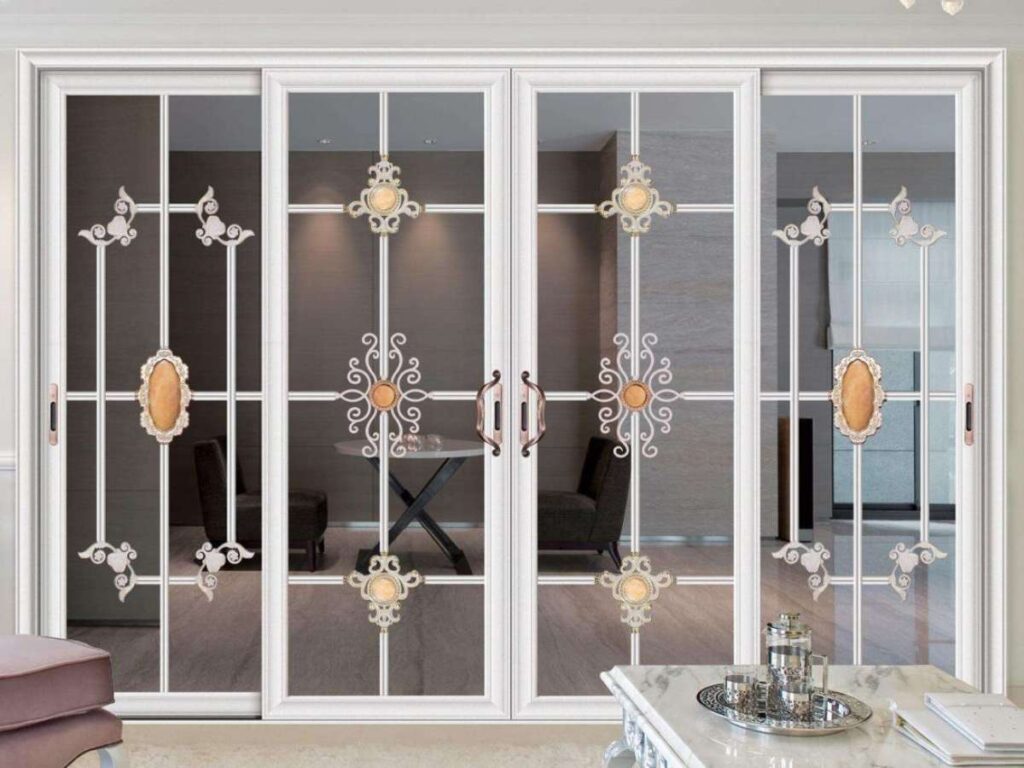
3. Lift and Slide Door
A lift and slide door is designed to handle larger, heavier panels with ease. Unlike standard sliders that rely on rollers alone, this system lifts the door slightly before it slides, reducing friction and strain on the track. The result is a smoother operation and a tighter seal when closed.
Key Features
- Lift Mechanism: The handle raises the panel slightly, taking pressure off the seals and rollers. This makes even heavy doors feel light to move.
- Smooth Sliding: Because the door lifts before it slides, friction is reduced. Owners often tell me it’s like moving a door with one hand, even with large glass panels.
- Tight Seal: When closed, the panel settles back down and locks against the frame. This provides better insulation against sound, heat, and wind.
- Wide Openings: Lift and slide systems can handle much larger panels than a standard slider, making them ideal for villas or hotels with big balconies.
Essential Components
- Lift-and-Slide Hardware: This is the heart of the system. Without the lifting action, the door is just another heavy slider. Quality hardware keeps the function reliable over time.
- Heavy Rollers: These rollers are built to carry large glass panels. If they’re well-made, they won’t flatten or wear out quickly.
- Compression Seals: The sealing system locks out air and water when the panel drops back into place. This is especially valuable in coastal properties I’ve worked on.
- Secure Locking Options: Multi-point locking systems add strength, making these doors suitable for ground-floor apartments or villas.
Things to Consider
Lift and slide doors usually cost more than standard sliding doors. Many of my clients pause at the price, but I’ve seen how the smoother operation and tighter sealing often save money in the long run—fewer complaints, fewer repairs, and better energy performance.
Installation also needs careful attention. These doors are heavier, and the lifting mechanism must be set correctly. I’ve seen a few cases where poor installation caused uneven lifting. That’s why I always remind property owners to work with installers experienced in this system. For those looking for trusted options, Vallisco manufactures lift and slide doors designed for long-term use.
4. Stacking Sliding Door
Stacking sliding doors are built for wide balcony openings where multiple panels slide and stack neatly behind each other. This design allows properties to create a large, open passage that connects indoor and outdoor spaces in a seamless way. I’ve seen this work especially well for hotels that want guests to feel the balcony is part of the room itself.
Key Features
- Multiple Sliding Panels: Instead of just 2, these systems use 3 or more panels that stack to one or both sides. This creates a much larger opening.
- Flexible Layouts: Panels can slide in one direction or meet in the middle, giving you choices on how traffic flows.
- Enhanced Ventilation: A wider opening means more airflow. This makes rooms feel fresher, something tenants and guests often notice.
- Strong Frames: Because of the number of panels, these systems require sturdy frames and tracks to carry the load.
Essential Components
- Track System: The tracks need to support multiple panels without binding. I’ve seen projects fail because installers used basic tracks meant for lighter doors.
- Heavy-Duty Rollers: Each panel depends on rollers to glide smoothly. If the rollers wear out early, the whole system becomes difficult to use.
- Joinery Between Panels: Proper joinery keeps the panels aligned and stops air from leaking between them.
- Locking Points: Wider doors call for more secure locks, often with several locking positions across the frame.
Things to Consider
Stacking sliding doors take up more wall space, since the stacked panels need somewhere to rest. I always tell clients to think about the layout of the room before choosing this system, because furniture or walls can limit how much the panels can slide.
Cost and installation can also be higher than standard systems. But for many property owners, the open feel and the look of a large glass wall are worth it. I’ve had clients who moved from rattling 2-panel doors to stacking systems and saw not just fewer problems, but also better tenant satisfaction.
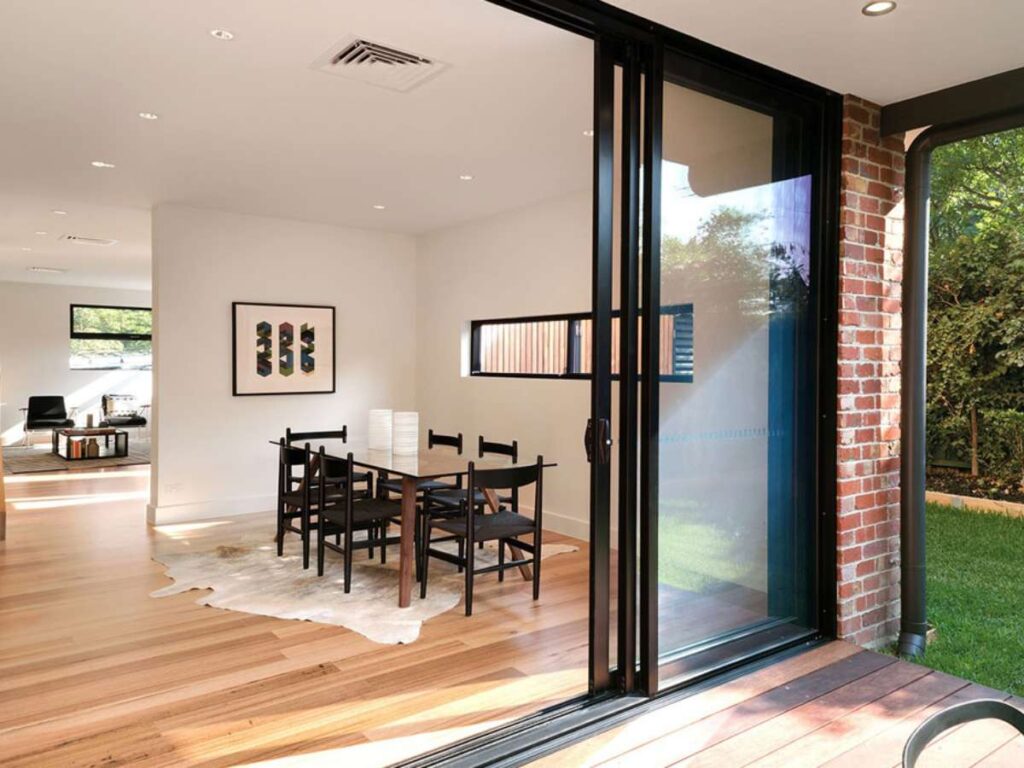
5. Pocket Sliding Door
A pocket sliding door is designed to disappear into the wall cavity when opened. This makes it one of the best space-saving options, especially for properties where every square meter counts. I’ve seen them used in apartments and boutique hotels where the goal was to give guests a clean, open flow without bulky frames in sight.
Key Features
- Space Efficiency: Since the panels slide into the wall, there’s no visible stack or fixed panel. This leaves the full opening clear for movement.
- Minimal Design: The hidden track and frame give a modern, uncluttered look. Many clients prefer this when style is a priority.
- Flexible Configurations: Pocket doors can be single or double, depending on the width of the opening and the structure of the wall.
- Glass Options: Panels can be clear, frosted, or tinted glass to match the property’s design and privacy needs.
Essential Components
- Pocket Frame: The cavity inside the wall must be strong enough to hold the sliding panel. If it’s not built properly, the door can stick or warp over time.
- Track and Rollers: The concealed track and rollers need to be high quality since repairs are harder once the system is inside the wall.
- Sealing System: While pocket doors save space, they often need extra attention to sealing if used on balconies exposed to wind or rain.
- Locking Options: Because of the hidden design, not all pocket doors come with strong locks. For projects needing security, this has to be specified from the start.
Things to Consider
The biggest challenge with pocket sliding doors is installation. The wall must be designed or modified to fit the pocket cavity, which adds time and cost. Careful planning upfront makes a big difference.
Another point is long-term maintenance. Since the track and rollers are hidden, access for repairs can be difficult. That’s why I always remind my clients to invest in durable hardware. A cheap system may look good at first, but like the rattling doors in that apartment project I mentioned earlier, problems can show up quickly if the parts aren’t built to last.
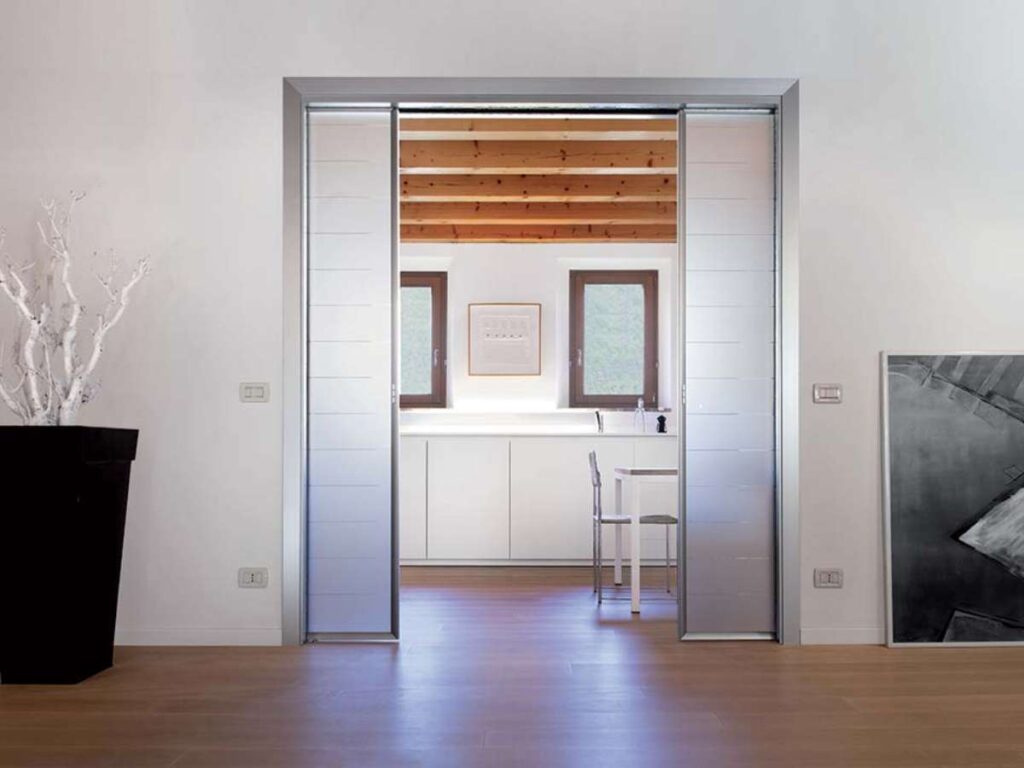
6. Sliding Door with Integrated Fly Screen
In many projects I’ve worked on, property owners faced complaints about insects coming in when balcony doors were left open. For apartments, villas, or hotels in tropical climates, this becomes a real problem. That’s where a sliding door with an integrated fly screen makes a big difference. It allows fresh air to circulate while keeping pests out.
Key Features
- Built-In Screen: The screen is part of the sliding system and moves on its own track. This avoids the need for separate add-on screens.
- Ease of Use: Guests or tenants can slide the screen open or closed with the same ease as the door. No extra effort or attachments are needed.
- Airflow and Comfort: Fresh air can flow freely while mosquitoes and flies are blocked. This improves the living experience, especially in Southeast Asia where I’ve seen this issue often.
- Low Profile Design: The screen is slim and doesn’t affect the overall look of the door. Many clients prefer this over bulky external screens.
Essential Components
- Screen Mesh: The mesh must be fine enough to block insects while still allowing airflow. I’ve found that high-quality fiberglass or stainless steel meshes last longer.
- Separate Track: The screen runs on a parallel track to the glass panels. This makes it smooth to operate without interfering with the main door.
- Rollers for the Screen: Lighter than glass panels, but still important. Good rollers keep the screen from sticking or jumping off its track.
- Locking or Latching: Some screens come with a latch to keep them closed, which is useful in windy areas.
Things to Consider
Property owners sometimes overlook the value of integrated screens, then end up adding makeshift ones later. Those temporary solutions often break or look out of place, leading to the same kind of complaints I saw with those rattling balcony doors. Planning for an integrated screen from the beginning saves time and avoids extra costs later.
Maintenance is another factor. Screens are lighter than glass, but they still need care. Dust and debris can clog the mesh or track over time. I often advise clients to choose a system where the screen can be easily removed for cleaning. It keeps the door looking and working like new for longer.
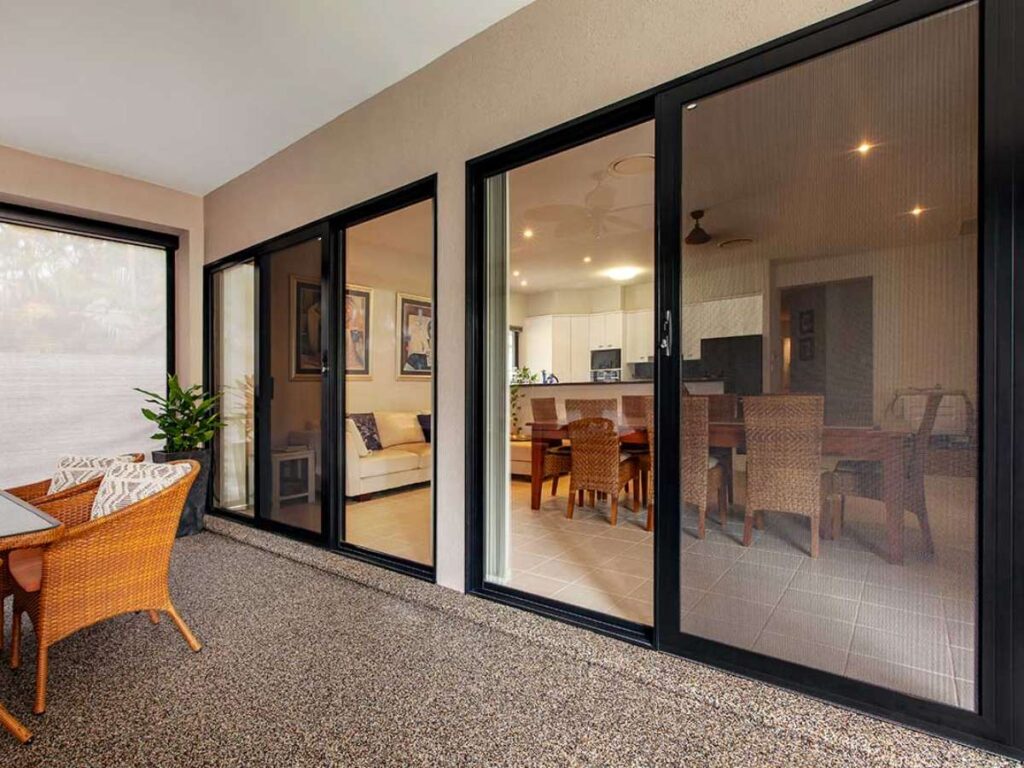
7. Corner Sliding Door (90° or 135°)
Corner sliding doors are designed for properties with balconies that wrap around the building. Instead of stopping at a wall, the sliding panels meet at a corner and open up in both directions. I’ve seen them used in villas and high-end apartments where the goal was to create a wide, open connection between indoor and outdoor living.
Key Features
- Corner Opening: The system removes the barrier of a fixed corner post, so the entire corner can open at 90° or 135°.
- Flexible Configurations: Panels can slide to either side, creating different options for how the space is used.
- Panoramic Views: With no corner post blocking the sightline, guests or tenants enjoy an uninterrupted view.
- Indoor-Outdoor Feel: Properties benefit from a seamless transition, which works well for hotels and resorts.
Essential Components
- Corner Track System: The tracks meet at the corner and allow both sets of panels to slide smoothly without binding.
- Strong Frames: With no post at the corner, the frames and tracks need extra strength to carry the load.
- Reinforced Glass Panels: Large glass surfaces must handle wind pressure, especially in high-rise apartments or coastal properties.
- Secure Locking: Multi-point locks are often added along the frame to keep the system safe when closed.
Things to Consider
Installation is the most critical part of a corner sliding door. If the alignment is even slightly off, the panels don’t meet cleanly, and gaps appear. I’ve seen property owners struggle with this, similar to the frustration caused by rattling doors in apartments. The solution is careful planning and skilled installation from the start.
Another factor is exposure to the weather. Since these systems create wide openings, sealing must be precise to prevent water and air leaks. I often advise clients in coastal or rainy regions to choose higher-grade sealing systems and reinforced glass, even if it adds cost upfront. It pays off with fewer complaints and longer performance.
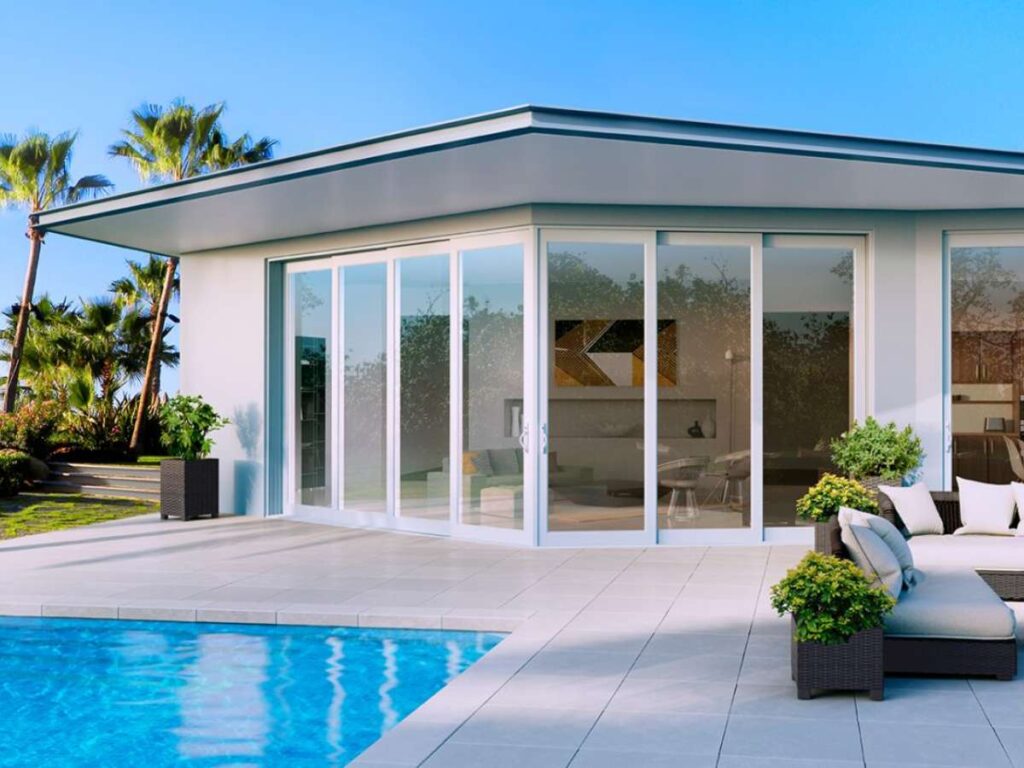
8. Aluminum-Framed Sliding Door
Aluminum-framed sliding doors are one of the most common choices I see in both apartments and hotels. The reason is simple: aluminum is strong, long-lasting, and works well with large glass panels. Compared to the rattling doors I mentioned earlier, most of those problems started because the frames or tracks weren’t built with durable materials. Aluminum helps avoid that mistake.
Key Features
- Strong Frame: Aluminum supports heavy glass panels without bending or warping, even with repeated daily use.
- Slim Profiles: The frames can be made thinner while still carrying weight, which allows for more glass and better views.
- Corrosion Resistance: With proper coating, aluminum handles humid or coastal environments much better than untreated steel or wood.
- Design Flexibility: Frames can be powder-coated in different colors to match a building’s style.
Essential Components
- Aluminum Extrusions: These are the base of the frame. High-quality extrusions keep the door strong and straight over time.
- Thermal Breaks: Many aluminum systems include a thermal break inside the frame to improve insulation. This matters in both hot and cold climates.
- Durable Tracks: Aluminum tracks, paired with strong rollers, prevent the sticking and rattling I’ve seen in cheaper systems.
- Locking Options: The frame can support multi-point locking systems, giving better security for apartments and villas.
Things to Consider
Aluminum-framed doors are often more expensive than uPVC, but they last longer and need less upkeep. Over time, this reduces the kind of repair calls that property managers complain about.
Another consideration is thermal performance. Standard aluminum can transfer heat, which may not be ideal in certain climates. That’s why I often recommend systems with thermal breaks or double glazing. It solves the comfort issue while keeping the strength that aluminum provides.
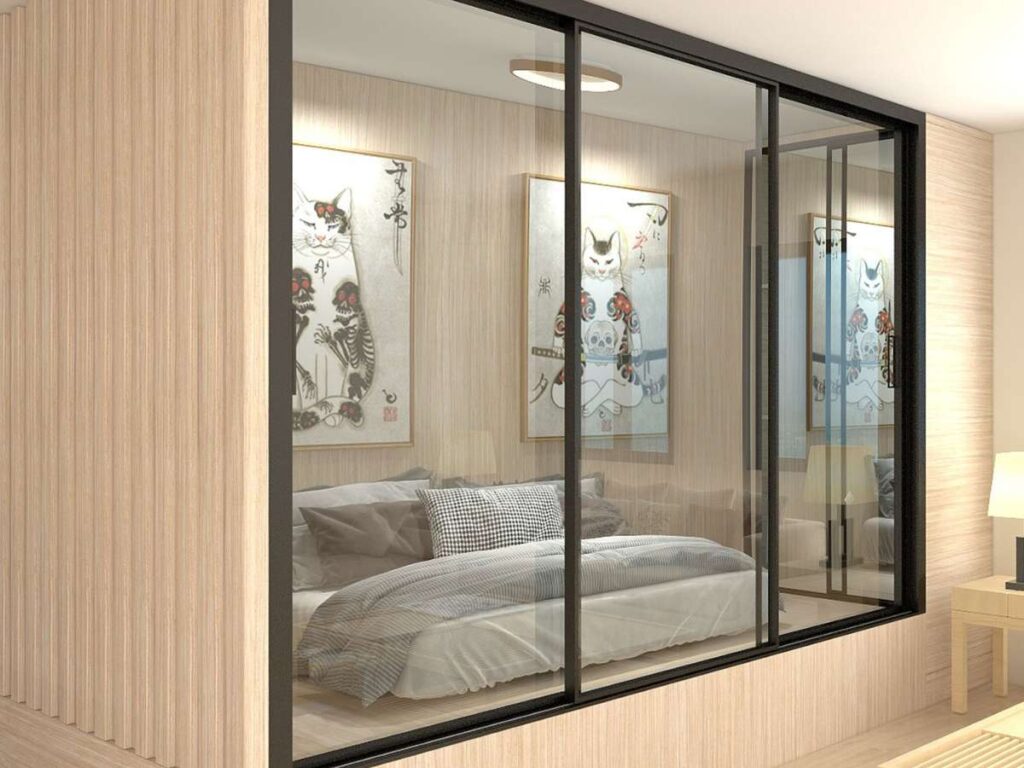
How to Choose the Right Balcony Sliding Door for Your Apartment Needs
I know from experience that picking the right sliding door can feel like a small detail, but it affects the comfort and value of your property for years. The wrong choice leads to repairs and complaints—like the rattling doors I mentioned earlier. The right choice, on the other hand, saves you time, money, and frustration.
Here are a few points I always guide my clients to think about:
- Match the Door to the Space: A small apartment balcony may only need a standard 2-panel system, while a villa or hotel could benefit from a stacking or lift-and-slide door. Think about how much opening you want and how your guests or tenants will use the space.
- Prioritize Durability: Cheaper systems often fail in the same way those rattling doors did, worn-out tracks, rollers, or frames. Look for materials like aluminum and hardware that can handle heavy, daily use. The upfront investment pays off with fewer repairs.
- Consider Climate and Environment: In tropical or coastal areas, corrosion resistance and sealing are critical. In colder regions, thermal breaks and double glazing help maintain comfort. I’ve seen too many projects overlook this, only to spend more later fixing performance issues.
- Balance Design and Function: Style matters, but function comes first. Choose a finish and glass type that fit your building design, but don’t compromise on ease of use or security. A door should look good, glide smoothly, and stay reliable for years.
Conclusion
That apartment with the rattling doors taught me how much sliding doors matter in daily living. A poor choice leads to constant complaints, while the right system adds value and peace of mind.
In this guide, you’ve seen eight options, from simple 2-panel doors to advanced lift-and-slide systems. Each one can transform your balcony into a practical, lasting space.
If you’re planning upgrades or new projects, take time to choose carefully.
For expert solutions that fit your needs, contact Vallisco today and get doors built to last.
Dive Deeper Into Our Resources
Looking for more diverse service options? Browse through our handpicked selections:
Still haven’t found what you’re looking for? Don’t hesitate to contact us. We’re available around the clock to assist you.


